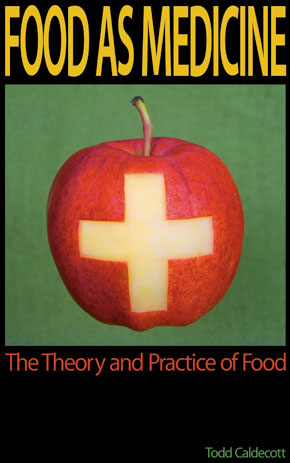The diet to balance pitta corresponds to the many of the so-called “balanced” diets out there, such as the Mediterranean or Indo-Mediterranean diet, that display a mostly balanced ratio of fats, proteins and carbohydrates. In Ayurveda this diet is good for people that have an average metabolism, neither very fast nor slow, providing a balanced source of energy. In particular, this diet is good for people that have a hot temperament, and tend to get warm easily. Some of the recommendations of this diet are contraindicated for people suffering from excessive coldness.
Pitta-reducing diet
A pitta-reducing diet is predominant in sweet, bitter and astringent flavors, expressing the qualities of cold, light and dry. This includes a preference for foods such as:• Soup stock made from vegetables, mushrooms as well as cooling herbs and spices (e.g. Garden Vegetable Soup, p. 150)
• Lean cuts of meat, prepared baked or grilled, e.g. poultry, fish, bison, elk, wild game (e.g. Herb Poached Wild Salmon, p. 166)
• Leafy greens and other vegetables, steamed or eaten raw
• Whole grains and legumes, prepared as soups and stews with cooling herbs and spices (e.g. Goji Quinoa Pilaf, p. 184)
• Raw milk, fresh yogurt, buttermilk (e.g. Khadi, p. 177)
• Fresh fruit, with minimal citrus and sour varieties
• Cooling fats and oils, such as coconut and ghee
• Cooling herbs and spices, e.g. coriander, fennel, turmeric, clove, mint, cumin, licorice
• Cane sugar (jaggery, gur) in limited amounts
How do you know if a pitta-balancing diet is right for you? One way to use the diet is to treat pitta-specific health issues, such as diarrhea, inflammation or bleeding problems, and another way is to use it to balance your constitution. What follows are the features of a pitta constitution, taken from my book Food As Medicine: The Theory and Practice of Food. Please also check out the pages on a vata-balancing and kapha-balancing diet to see if these diets are more suitable. Remember too, that you can be a combination of the doshas, and so the best might be a balanced combination of two or three different diets.
Pitta constitution
Pitta constitution is more sensitive to qualities such as heat, moistness, and lightness, and thus measures are taken on a general basis to balance these aspects by emphasizing qualities such as cold, dry and heavy. Physically, pitta types have a strong metabolism, strong digestion, and a general tendency to mild inflammatory states. The body is of average build, with a well-developed musculature and generally less fat than kapha but not skinny like vata. The features are angular: thinner, sharper and longer, with a medium breadth. The skin is often quite ruddy and there is a general tendency to excessive heat. Warm temperatures and hot climates are poorly tolerated. There is a tendency to excessive bile production and gastrointestinal secretions (tikshnagni), loose bowel movements, and more frequent urination. Pitta types are more sensitive to sensory stimuli than kapha, especially light, heat and sound. They tend to be more physically active than the either vata or kapha types, with coordinated, quick and efficient movement, sometimes aggressive, and act with determination and purpose.

